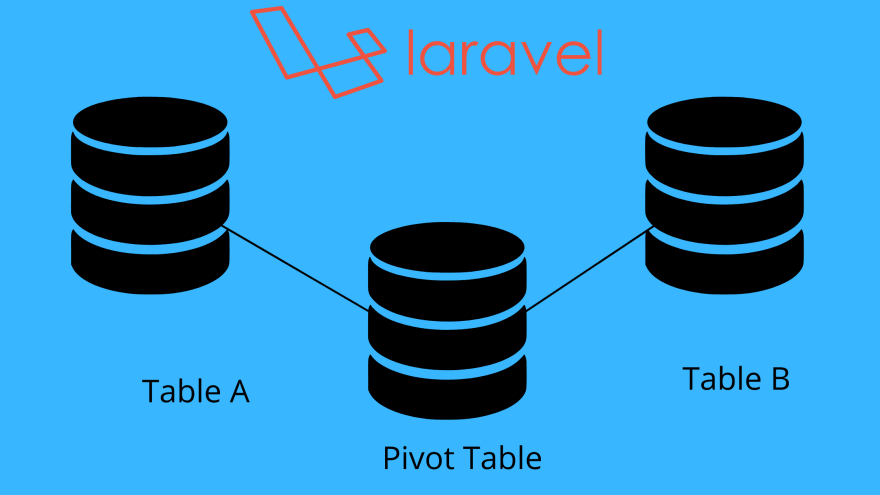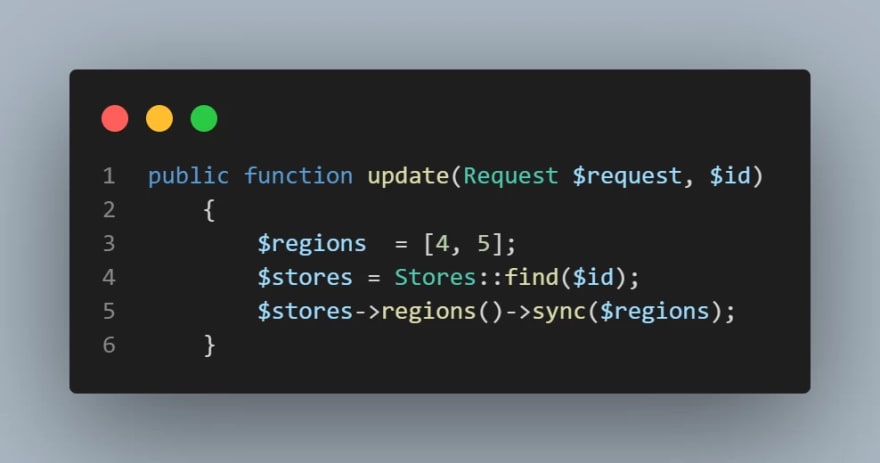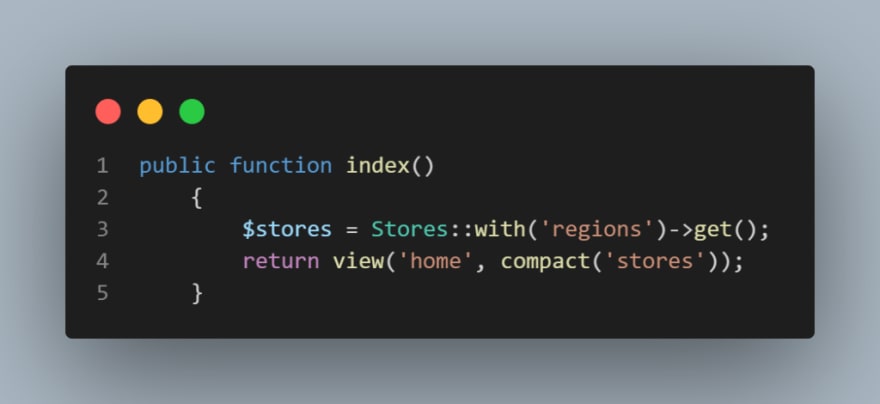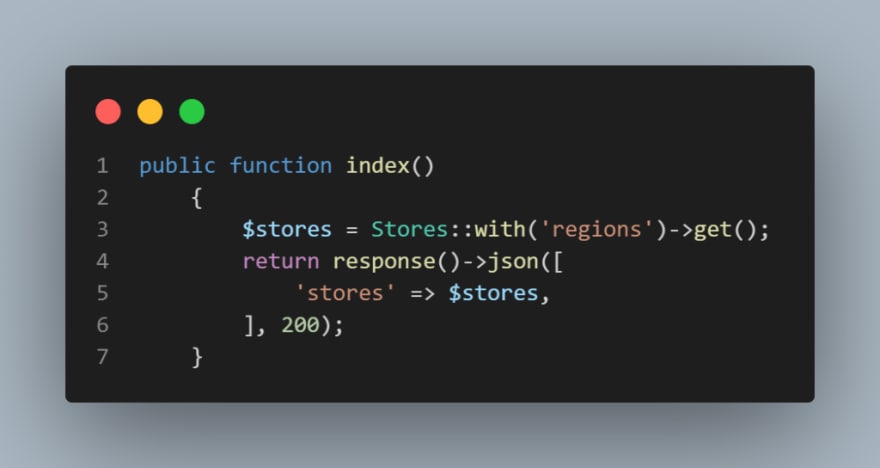
Many to many relationships occur when multiple records in a table have an association with multiple records in another table. For example, a many-to-many relationship exists between a store and a region in a system: A store can serve many regions and a region can have many stores serving it. In this tutorial, you will learn how to implement Laravel Many-to-Many Relationship. I am going to use the store-region relationship mentioned earlier
A many to many relationships involve three tables in its ecosystem. The two tables will be for the independent tables which in my case will be the regions table and the stores table. The third table is what is known as a pivot table. A pivot table is an intermediate table that connects the two independent tables using their foreign keys.
How do you implement many to many relationships in Laravel?
To implement many to many relationships, we will need to follow these steps
1. Create a Laravel Project
The first step will be to create a Laravel project. If you already have a project, then you can skip this step
composer create-project laravel/laravel test-app
2. Create a model and migration
The next step is to create the model and migration files for our project. I will first create a Region Model and its migration file
php artisan make:model Regions -m
public function up()
{
Schema::create('regions', function (Blueprint $table) {
$table->id();
$table->string('name');
$table->timestamps();
});
}
/**
* Reverse the migrations.
*
* @return void
*/
public function down()
{
Schema::dropIfExists('regions');
}
The next model is the Stores mode l and its migration file
php artisan make:model Stores -m
public function up()
{
Schema::create('stores', function (Blueprint $table) {
$table->id();
$table->string('name');
$table->timestamps();
});
}
/**
* Reverse the migrations.
*
* @return void
*/
public function down()
{
Schema::dropIfExists('stores');
}
3. Create a pivot table
We then need to create a pivot table that will connect the two tables; stores and regions tables. In Laravel, a pivot table is created by checking the alphabetical order of the two-parent tables. For example, if we had parent table “a” and parent table “b” , then the pivot table would be “a_b”. Using the same analogy, I can create my pivot table “regions_stores” table for my case.
php artisan make:migration create_regions_stores_table
I will then add the foreign keys of the parent tables as shown
public function up()
{
Schema::create('regions_stores', function (Blueprint $table) {
$table->id();
$table->unsignedBiginteger('regions_id')->unsigned();
$table->unsignedBiginteger('stores_id')->unsigned();
$table->foreign('regions_id')->references('id')
->on('regions')->onDelete('cascade');
$table->foreign('stores_id')->references('id')
->on('stores')->onDelete('cascade');
$table->timestamps();
});
}
/**
* Reverse the migrations.
*
* @return void
*/
public function down()
{
Schema::dropIfExists('regions_stores');
}
4. Define many to many relationships
Now that we have our parent and pivot tables ready, we will have to define the Laravel many-to-many relationship in the Parent Models. We will use the belongsToMany() function to do so. This function expects a series of parameters such as the related Model , optional table name , optional foreign pivot key , and optional related pivot key among others. The only required parameter is the related model. All others can be prefilled for you if you used the alphabetical naming conventional.
I personally like specifying the optional parameters too such as table name , ** foreign pivot key** , and related pivot. This is because I want to have full control over my pivot table.
I will update the Stores model as follows
public function regions()
{
return $this->belongsToMany(Regions::class, 'regions_stores', 'stores_id', 'regions_id');
}
I will also update my Regions Models as follows
public function stores()
{
return $this->belongsToMany(Stores::class, 'regions_stores', 'regions_id','stores_id');
}
5. Using the Many to Many Relationship in our Controller
Once we have defined our many to many relationships, we can now migrate the database
php artisan migrate
The next step is to use these helper functions to help us assign the many to many relationships to our records.
attach() function
This method is used to create and assign a record to multiple other records. For example, if I have a store and I want to assign regions where it can serve, I can use this method to do so
public function store(Request $request)
{
$regions = [1, 2, 3];
$stores = new Stores();
$stores->name = $request->input('store_name');
$stores->save();
$stores->regions()->attach($regions);
}
sync() function
This method can be used to update many to many relationship attachments. It reassigns records to the newly provided assignments. For example, if I had a store A that serves the following regions; London New York, Toronto, and Nairobi, I would want to update its regions by either adding more, I would use this function
public function update(Request $request, $id)
{
$regions = [4, 5];
$stores = Stores::find($id);
$stores->regions()->sync($regions);
}

Reassign new regions to a store
detach() function
This method is used to delete the attachment of a record in many to many relationships. For example. If I have a store record that wants to close down, I would also want to remove its attachment meaning the regions it serves. I can have this method run before a delete function in my controller.
public function destroy($id)
{
$stores = Stores::find($id);
$stores->regions()->detach();
$stores->delete();
}

Remove any attached regions from a store before deleting the store
You can get more details regarding the functions here.
6. Retrieving Records
Now that we have our records in a many to many relationship, how do we retrieve the records? In this part, I am going to show you how I retrieve the records from the pivot table and add them to my JSON responses(if I am creating a Laravel API) or a response(If I am creating a Laravel CRUD application).
CRUD Fullstack app(Normal Response)
In this case, I can just load all the records using the function I had created in the Parent model and pass them to the blade templates using the compact() helper. The compact() helper creates an array from the collection passed to it. I would then use a for each loop and loop through the array in the blade template and output the required fields.
public function index()
{
$stores = Stores::with('regions')->get();
return view('home', compact('stores'));
}

Using compact to pass data to the home blade file
Rest API approach(JSON Response)
For this part, you would not want to expose other details such as created_at and updated_at to a front end client. As a result, you can use Laravel Resources to format your responses. In my case, I will just return all the records including the region details in the same response.
public function index()
{
$stores = Stores::with('regions')->get();
return response()->json([
'stores' => $stores
], 200);
}

Sample Response for a Rest API
This will return a JSON response that resembles the one below
{
"stores": [
{
"id": 2,
"name": "Store A",
"created_at": "2022-07-07T08:36:50.000000Z",
"updated_at": "2022-07-07T08:36:50.000000Z",
"regions": [
{
"id": 1,
"name": "Region A",
"created_at": "2022-07-07T12:00:46.000000Z",
"updated_at": "2022-07-07T12:00:51.000000Z",
"pivot": {
"stores_id": 2,
"region_id": 1
}
},
{
"id": 2,
"name": "Region B",
"created_at": "2022-07-07T12:00:56.000000Z",
"updated_at": "2022-07-07T12:01:01.000000Z",
"pivot": {
"stores_id": 2,
"region_id": 2
}
},
{
"id": 3,
"name": "Region C",
"created_at": "2022-07-07T12:01:05.000000Z",
"updated_at": "2022-07-07T12:01:09.000000Z",
"pivot": {
"stores_id": 2,
"region_id": 3
}
}
]
}
]
}
Conclusion
In this tutorial, you have learnt when to use many to many relationships and how to implement Laravel many-to-many relationship. I hope this article was helpful in your quest of using many to many relationships and helping create good applications.
If you enjoyed this article, you'd love the Free Laravel Guide I prepared for you. Be sure to get your guide today.
Thank you for reading.
The post Laravel Many-to-Many Relationship: How to implement It appeared first on Ian Kumu's Blog.









Top comments (0)